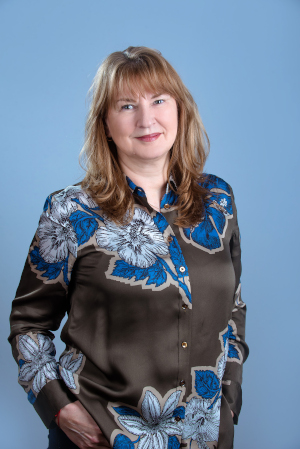We are honoured to invite you to read an exclusive interview with Matthias Hillner, Professor at Savannah College of Art and Design

Please tell us more about your career start and your connection to what you do today. What did you want to do when you were little and how did you come up to have so many creative roles nowadays?
Setting out on a journey of creativity demands a certain level of idealism. A pragmatic approach would lead one down a different path. I recall the abundant use of imagination as I was growing up. A plain cardboard box had the power to morph into whatever I desired. I heard of Star Wars, Star Trek, and similar films long before I had the chance to see them. Until I finally watched those movies, I had to rely on my imagination to conjure their images, as media exposure was limited in those days.
My curiosity for the unknown grew. Tales of exotic worlds intrigued me, yet physical visits eluded me. It wasn’t until after leaving school that I had my first taste of cross-continental travel, venturing beyond Europe’s borders. Until then, I explored foreign lands solely within the confines of my mind. With the onset of work and studies, I seized every opportunity to journey, whether it be tied to a photography project or through a student exchange program or, eventually, through relocating and working abroad. Travel, I discovered, is profoundly enriching.
Coincidentally, shortly after my school years in the early 90s, I crossed paths with a Romanian, and our friendship endured over the decades. We often spoke of Romania, and it is only now that I have the chance to visit the beautiful country my friend spoke so fondly of.
What is your main philosophy when approaching your profession?
I tend to take a fairly idealistic stance most of the time. I ask myself not so much „What is?”, I tend to ask myself „What if?” This paves the way towards a visionary approach which allows me to question the status quo, and to provoke. Through questioning, and thinking beyond „What is” we can conceive possible futures and identify innovation opportunities.
Philosophically, I would say that my worldview is a combination of phenomenological facets, positivistic elements, as well as structuralist and post-structuralist perspectives. Some of these paradigms are, of course, incompatible, and this means that I will shift my perspective depending on the circumstances.
A post-philosophical element in my perspective is nurtured through my exploration of Zen principles. Zen Buddhism transcends all worldviews and philosophical strands. In particular, in my fine-art practice, I can explore and be inspired by Buddhist principles. I read science, along with philosophy, and obtain teaching from Zen masters. It is truly fascinating to see all these revelations come together and blend to a harmonic whole. When I lived and worked in Cambridge UK, a year or two ago, I witnessed the launch of the book „On the Origin of Time — Stephen Hawking’s Final Theory” and I was practicing at the Cambridge Buddhist Centre, and at the same time two research peers, both of them Rumanian, in fact, introduced me to principles of quantum theory. This was fascinating considering how strongly intertwined those principles and perspectives are.
What do you think are the main questions that someone should ask himself/ herself in order to create a better design? What is better design, from your point of view?
A key question is, how can I make this world a better place? For one, we need to conjure up the courage to make a difference, and secondly, we should ask ourselves what it is that people need. It is easy to fall into the trap of egocentricity when desperately trying to dissociate ourselves and our design approaches from those of others. If we do this, we end up designing for ourselves rather than for those in need of our help. Students often design things that they need or would like to have. But this self-centricity can be deceptive. We need to ask ourselves carefully what difference our design work makes to this world. As soon as we ask this question, we part with an aesthetically driven approach and begin to connect design with values that transcend aesthetics. This is not to say that aesthetics do not matter. But it should not be our priority.
In contexts of service design, systems design, and social innovation, aesthetics cannot be a driving force since we are taking people’s needs into consideration from the outset. This is sometimes referred to designing from the outside in, as opposed to designing from the inside out. People, users, stakeholders come first, solutions are derived from the co-creative exploration of their needs.
You are one of the curators of the product design section of RDW Exhibition (Romanian Design Week) this year. First of all, what should we consider when we think about product design?
This is really an interesting question. I have seen product design courses struggle to recruit students — in the UK, in Singapore, in the USA — and when I was an adjunct lecturer at the MA Service Design at the Royal College of Art in London, a sizeable proportion of the first few students were from a product design background. Today the key questions seem to no longer revolve around aesthetics and ergonomics as they did in the 80s and 90s. What is much more significant is how products are components of systems and networks. The internet of things is an example of a conceptual framework that embeds products as system components. Society today is much more focused on networks, be they social, technological, or ecological, which underscores Alexander Manu’s point that products and technologies are behavior enablers. Digitization also reinforces the significance of networks and systems. So this is very important and interesting in conjunction with product design. Once we focus on the behavior change that is triggered by a new product, we are thinking already along the lines of impact and innovation. And this notion of impact and innovation should drive our design decision making.
What caught your attention regarding the projects selected at RDW Exhibition this year? What do you think about them and what was your main criteria when selecting them?
I was intrigued by the craftsmanship that some design submissions displayed. I am very appreciative of designers who pay attention to detail. Other designs impress through conceptual qualities more than through their execution or finishing. In some design cultures, we see a trend towards digital simulation, and this can be quite deceptive. In the digital realm, we can easily envision beautifully crafted objects, and even illustrate fundamentally new product design concepts. However, to bring them to life in the real world, and to make them usable and optimize them in line with user needs, entails a whole range of processes and challenges. This is where a designer requires perseverance, dedication, and, indeed, attention to detail.
What is spectacular about them and what can the general public learn from them, from your perspective?
What is most interesting are designs that challenge conventions, and generate entirely new thought processes. If paired with creative entrepreneurial skills, this could pave the way toward product inventions that can develop entirely new categories. I am reminded of the Trunki kids ride-on travel case, which Rob Law MBE incepted in the UK when he was in his final year of BA Product Design studies. It would seem difficult to imagine such an extraordinary invention to come from an established senior designer whose mind has been nourished with mainstream designs and balance sheets for decades. Trunki is a quirky idea, which challenged the British department store John Lewis because their management could not determine whether to position Trunki in the kids toy section or in the travel department. Such cutting-edge design ideas revolve around the eclectic qualities that we were told about during the initial briefing session. Eclecticism is good, tinkering also. Even though eight or nine out of ten approaches may fail, it is highly unlikely to invent something utterly new without taking any risk to begin with. We should not worry too much about doing something spectacular. However, we should not shy away from challenging the status quo, and be brave enough to pursue fundamentally new avenues.
Can you tell us more about how you see the design and creative industries here in Romania compared to what you see in the USA? Differences and similarities, if any.
The RDW submissions suggest to me that there is an awareness of common trends, but also a degree of authenticity. If we orientate too much on universal trends, we are at risk of losing touch with our cultural origins. This was an important point when I took helm of the School of Design Communications at LASALLE College of the Arts in Singapore in 2015. I was eager to raise awareness for the latest developments in the international design innovation sphere amongst lecturers and students. I soon came to realize that, although design in Singapore needed to meet or exceed international standards to remain competitive, it also needed to remain connected to local history and culture to retain its socio-cultural integrity and its unique characteristics. When speaking to Scott Maguire, Dyson’s former Chief Operating Officer, in Singapore in 2019, I learned that Dyson shifted a sizeable proportion of R&D activities to South East Asia, because the Asian market, including China, had fundamentally different market and consumer characteristics. These location-specific characteristics are significant. Despite the interconnectedness of 21st-century societies, it is important to sustain awareness for cultural heritage and unique characteristics. Romania may carry more authenticity than other European countries, as it is less infused through international mainstream influences. This can be a valuable point of differentiation and does not mean that technical sophistication and aesthetic qualities need to be compromised. Romanian design can absorb inspiration and influences from across the world in a selective way, whilst retaining its unique characteristics.
About Matthias Hillner
Matthias Hillner is Professor at the SCADpro Department at The Savannah College of Art and Design in the USA. His role involves guiding interdisciplinary student teams who develop design innovations and start-ups in exchange with industry partners. In 2005 Matthias secured a design business start-up award from the National Endowment of Science, Technology and the Arts in the UK, and ten years later received a commission from the UK IPO to investigate the infringement of design rights in the UK. Matthias relocated to Singapore to become Head of School, Design Communication at LASALLE College of the Arts in 2015, and he served as Director of Programmes at the Glasgow School of Art Singapore from 2019-2021. His areas of specialism comprise communication design, experience design, service design, creative leadership, and design innovation management. He holds three postgraduate degrees from the Royal College of Art and has authored two books: Virtual Typography (2009) and Intellectual Property, Design Innovation, and Entrepreneurship (2021).
Despre Romanian Design Week
Romanian Design Week este festivalul multidisciplinar dedicat industriilor creative, organizat de The Institute, prezentat de UniCredit Bank și finanțat de Ministerul Culturii. Anul acesta va avea loc între 24 mai și 2 iunie la București, în clădirea fostului restaurant CINA, lângă Ateneul Român.
Ediția din acest an invită publicul să exploreze orașul și să descopere potențialul acestuia, investigând în același timp metodele prin care creativitatea și inovația pot modela spațiile urbane ale viitorului, sub tema „Unlock the city”.
RDW Exhibition, unul dintre formatele festivalului, propune peste 200 de proiecte din 6 categorii diferite: arhitectură, design interior, design vestimentar, design grafic, design de produs și ilustrație. Acestea au fost alese de un board format din șase echipe de curatori locali și internaționali.
Biletele pot fi achiziționate de aici. Elevii, studenții și pensionarii au acces gratuit, iar deținătorii de card UniCredit de la Mastercard beneficiază de un discount de 50% la achiziția biletelor.




